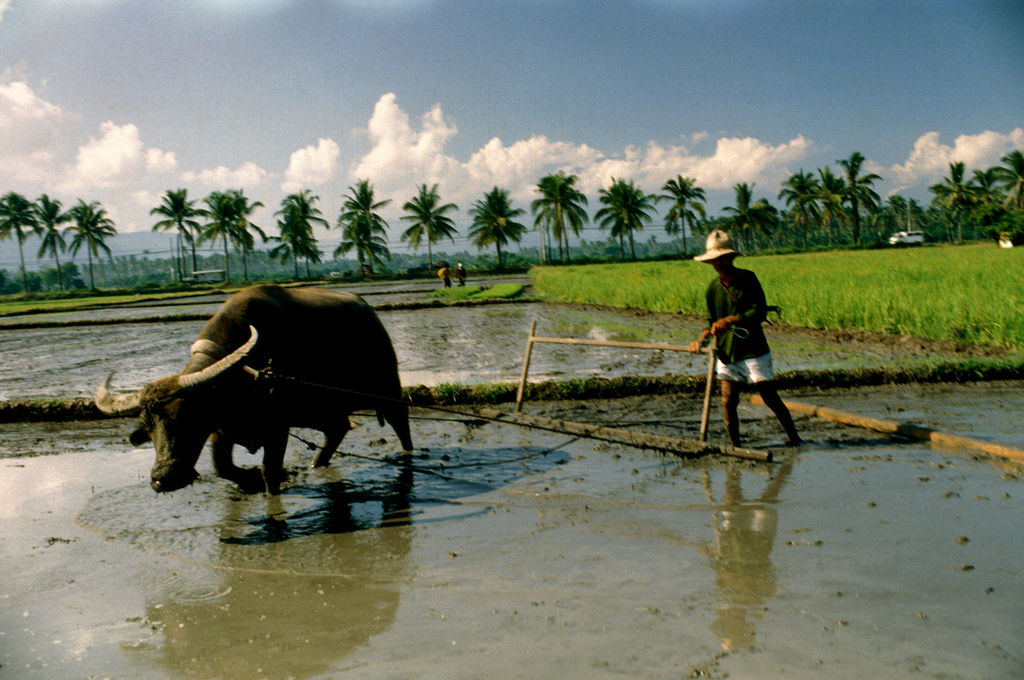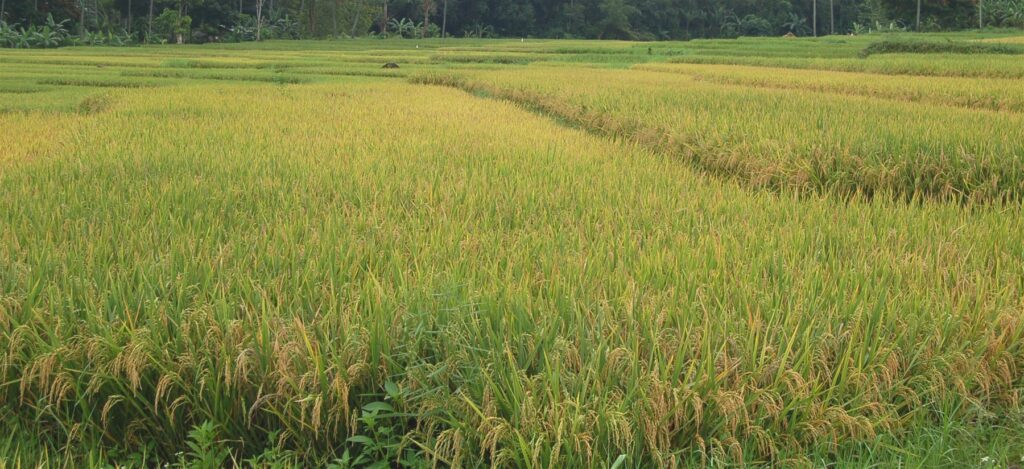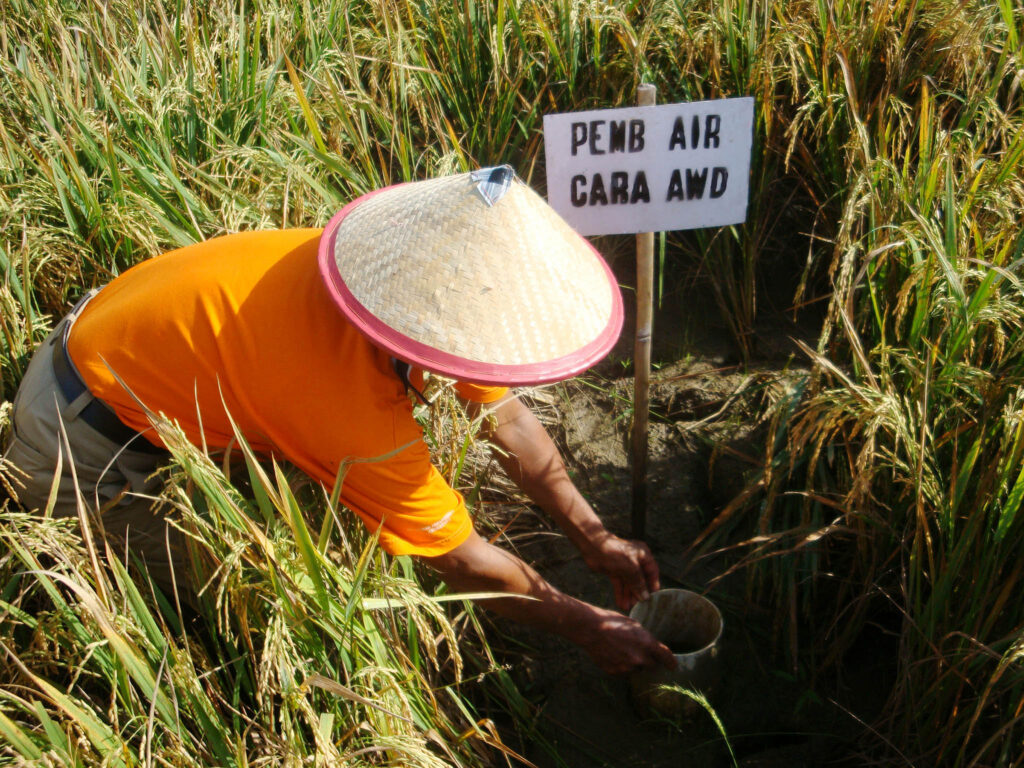By Henrylito D. Tacio
El Niño may have brought the threat of dry spells and water scarcity, but the farmers’ resilience has risen to the occasion. Rather than succumbing to adversity, they have embraced the challenge as an opportunity to learn new techniques and innovative practices to combat the phenomenon’s effects while getting additional income.
Farmers in Gabaldon, Science City of Muñoz, Nueva Ecija, are practicing a water-saving technology called Alternate Wetting and Drying (AWD) to counter the effects of El Niño. By doing so, they are also gaining extra income from carbon credits.
The implementation of AWD is “one of the most significant advancements brought about by El Niño,” said the Philippine Rice Research Institute (PhilRice), a line agency of the Department of Agriculture.
The technology was initiated by PhilRice and the Laguna-based International Rice Research Institute (IRRI) in 2000. “AWD was designed to address farmers’ irrigation needs during periods of water scarcity,” PhilRice said.
Also called controlled irrigation or intermittent irrigation, AWD technology can actually save farmers almost one-third of irrigation water without sacrificing yields. It also saves farm inputs like oil, fuel, and labor being utilized on the operation of water pumps.
Rice fields using this technology are alternately flooded and dried. The number of days of non-flooded soil can vary from one day to more than 10 days, according to IRRI. It uses an “observation well” that is made of bamboo, plastic pipes, or any hollow indigenous material. Perforations are made in the lower half of the tube.
The AWD technology can be started a few days after transplanting (or with a 10-centimeter tall crop in direct seeding). When many weeds are present, AWD can be postponed for 2-3 weeks until weeds have been suppressed by the water in the pond. Local fertilizer recommendations for flooded rice can be used. Nitrogen fertilizer may be applied preferably on the dry soil just before irrigation.
“A practical way to implement AWD technology is by monitoring the depth of the water table in the field using a simple perforated field water tube,” IRRI explains. “When the water level is 15 centimeters below the surface of the soil, it is time to flood the soil to a depth of around 5 centimeters at the time of flowering, from one week before to one week after the maximum flowering.”
The water in the rice field is kept at 5 centimeters depth to avoid any water stress that would result in severe loss in rice grain yield. The threshold of water level at 15 centimeters is called “safe AWD,” as this will not cause any yield decline because the roots of the rice plants are still able to take up water from the saturated soil and move it to the root zone.
“The field water tube used in this technology will help to measure the water level in the field so that incipient water stress in the rice plants can be anticipated,” the IRRI points out. As such, the AWD technology does not only save water but can greatly reduce emissions of methane.
In an 8-season field experiment conducted at IRRI, it was found that AWD “has real potential to reduce the global warming impact of paddy fields to one-third of the conventional continuously flooded field water management.”
Flooded rice paddies emit as much as 500 million tons of methane, around 20% of total man-made emissions of this gas, IRRI said.
The Journal Science reported that atmospheric concentration of methane has more than doubled during the last 300 years and is increasing at an annual rate of about 1% each year.
In a paper presented during the international workshop on “Water Management and Technology for Crop Production under Climate Change” in Suwon, Korea, the authors claimed AWD “can reduce methane emissions by over 40%.”
The UN-sponsored Intergovernmental Panel on Climate Change (IPCC) considered methane “one of the most potent greenhouse gases on Earth” in 2001.
“Methane absorbs heat 21 times more than carbon dioxide and it has 9- to 15-year life time in the atmosphere over a 100-year period,” said Dr. Constancio Asis, Jr., a recipient of the 2011 Norman E. Borlaug International Agricultural Science and Technology Fellowship Award.
The United Nations Framework Convention on Climate Change (UNFCCC) has approved AWD as a method for generating carbon credits. This allows farmers in the Philippines, through Ostrom Climate Solutions Inc., to save water and earn income.
Nestor L. Parpados, chair of the Board of Trustees of Kasangga ng Rang-ay Irrigators’ Association Incorporated IN Gabaldon, Science City of Muñoz, Nueva Ecija, shared his experience with water management in their rice fields before they adopted AWD.
“Before, we promptly fixed small cracks in the dikes that served as a sort of irrigation for us, especially during drought periods. This was to ensure that we had enough water supply,” he said.
With the adoption of AWD, water management has become much easier for Nestor and his fellow farmers. They can now determine when it’s necessary to irrigate, and the presence of an irrigation system provides additional assistance.
“Before, my best harvest during the dry season would only reach a little over 7 tons per hectare. With AWD and improved farm practices, I’ve harvested 11 tons per hectare from my hybrid rice,” he said.
In addition to the increased yield, Nestor anticipates an additional income source through the Climate-Smart Rice Project with the cash incentive he can gain from AWD’s carbon credit savings.
Dr. Eduardo Jimmy P. Quilang, PhilRice deputy executive director, said that farmers like Nestor are proof that opportunities are still available even during difficult climatic conditions.
“These situations motivate our farmers to learn new technologies making them better in the long run,” he said.
Meanwhile, Science Secretary Renato Solidum, Jr. in a televised briefing said that the current El Niño, which the country is experiencing, can be “comparable” to the “worst” episode that happened from 1997 to 1998.
“The indication of El Niño is strong, so we have to prepare (for it),” Solidum said.
According to the Philippine Atmospheric, Geophysical and Astronomical Services Administration (PAGASA), 77% of the provinces in the country may experience drought while 7% may have dry spell conditions by the end of May next year.
The weather bureau defines drought as “three consecutive months of way below normal rainfall (60% reduction from average) or five consecutive months of below normal rainfall condition (21% to 60% reduction from average).”
Dry spell happens when “three consecutive months of below normal rainfall (21% to 60% reduction from average) or two months of consecutive way below normal rainfall (more than 60% reduction from average).”
An advisory released by the weather bureau last December 6 said that “a strong El Niño is present in the tropical Pacific and further intensified, nearing its peak in the coming months, as sea surface temperature anomalies have reached more than 1.5 degrees Centigrade.”
Forewarned is forearmed, so goes a saying. If we are not prepared for it, then we will likely experience hunger and food insecurity. Drought and dry spells will definitely affect crop, livestock, and fishery production.
“The effects of El Niño, especially in agriculture, such as crops, livestock, poultry, and irrigation system, will depend on the intensity or characteristics of El Niño,” Mona Liza Delos Reyes, a researcher from the University of the Philippine at Los Baños, was quoted as saying by Manila Bulletin.
Agriculture, livestock, and fishery are dependent on water. “Since rainfall is our ultimate source of water, if the rainfall is reduced, our water supply will also be reduced. Our irrigation system is fed with water from the rivers, lakes, and other sources of water,” Delos Reyes said. – ###




